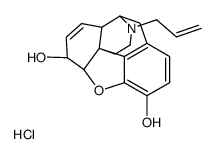Nalorphine's ability to substitute for morphine in a drug discrimination procedure is a function of training dose.
S D Grabus, S T Smurthwaite, A L Riley
Index: Pharmacol. Biochem. Behav. 63 , 481, (1999)
Full Text: HTML
Abstract
Rats trained to discriminate the mu agonists fentanyl or morphine from their respective vehicles generalize to the partial mu agonist nalorphine incompletely and inconsistently. Any number of factors may influence the generalization patterns obtained, one of which being the specific dose of the full opioid agonist used during training, a factor reported to influence generalization with other partial opioid agonists. To assess if training dose influences stimulus generalization to nalorphine and to support its role in the aforementioned variability across studies, in the present experiments rats were trained to discriminate either a low (5.6 mg/kg) or a high (10 mg/kg) dose of morphine from distilled water within the taste aversion baseline of drug discrimination learning. Subjects were then given a range of doses of morphine, nalorphine, methadone, or naloxone to assess the degree of substitution (if any) of these compounds for the training dose of morphine. For all subjects, morphine fully substituted for itself, and the opioid antagonist naloxone failed to substitute for the morphine cue. Rats generalized the morphine cue to nalorphine in subjects trained at the lower dose but not in subjects trained at the higher dose. Rats generalized the morphine cue to methadone in the latter group (the high dose group), indicating that the failure to generalize to nalorphine in this group was not a general inability of an opioid agonist to substitute for morphine. Naloxone blocked morphine stimulus control in all subjects and nalorphine control in the low-dose group for which nalorphine substituted for morphine, suggesting that morphine control (and the nalorphine substitution) was based on opioid activity. These results indicate that the substitution patterns of nalorphine in morphine-trained subjects are a function in part of the dose of morphine used in training and support the position that nalorphine is a partial opioid agonist with intermediate efficacy.
Related Compounds
| Structure | Name/CAS No. | Molecular Formula | Articles |
|---|---|---|---|
 |
nalorphine hydrochloride ciii (250 mg)
CAS:57-29-4 |
C19H22ClNO3 |
|
Analysis of naltrexone and its metabolite 6-beta-naltrexol i...
2012-01-01 [BMC Res. Notes 5 , 439, (2012)] |
|
GC-MS confirmation of codeine, morphine, 6-acetylmorphine, h...
1999-01-01 [J. Anal. Toxicol. 23(3) , 177-86, (1999)] |
|
Comparison of stably expressed rat UGT1.1 and UGT2B1 in the ...
1997-02-01 [Drug Metab. Dispos. 25(2) , 251-5, (1997)] |
|
The mu opioid irreversible antagonist beta-funaltrexamine di...
1998-11-01 [Psychopharmacology 140 , 20, (1998)] |
|
The glucuronidation of exogenous and endogenous compounds by...
1996-08-01 [Arch. Biochem. Biophys. 332(1) , 92-100, (1996)] |